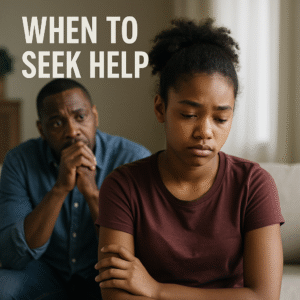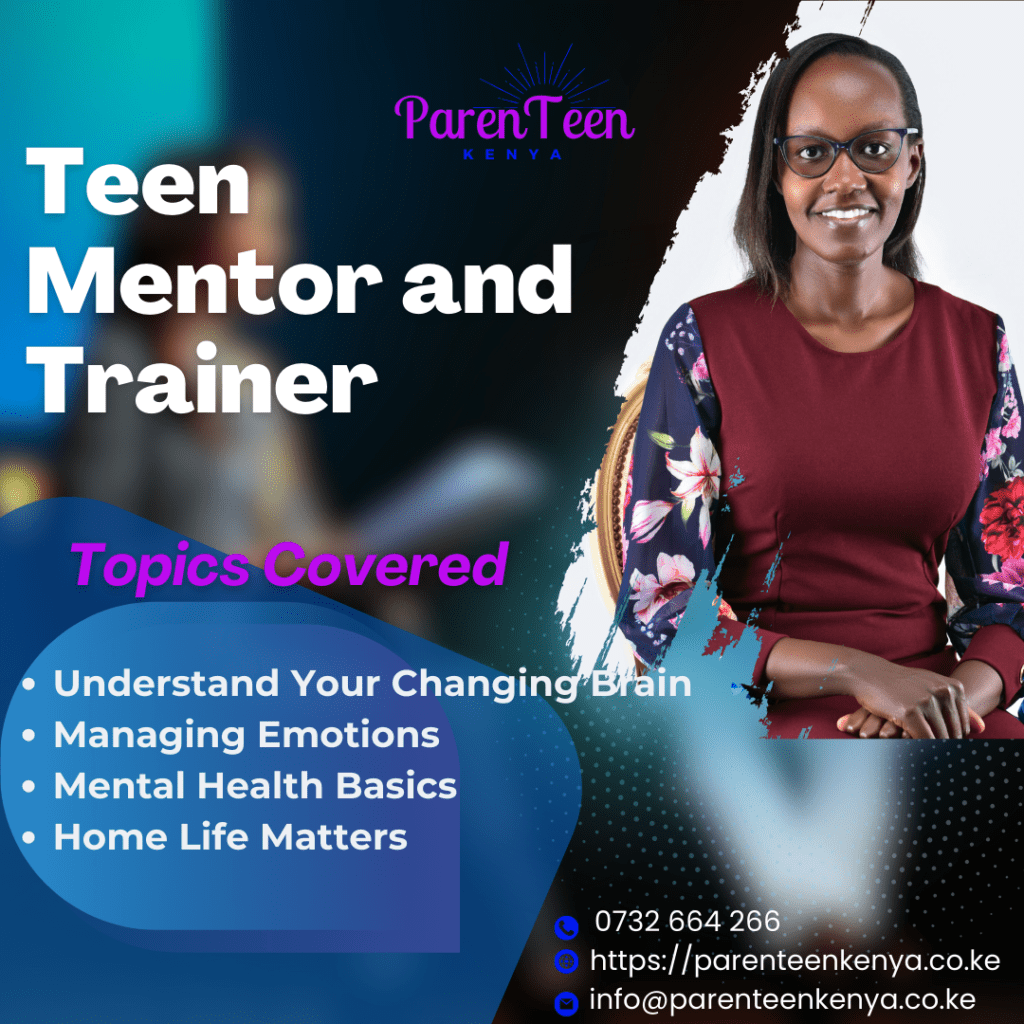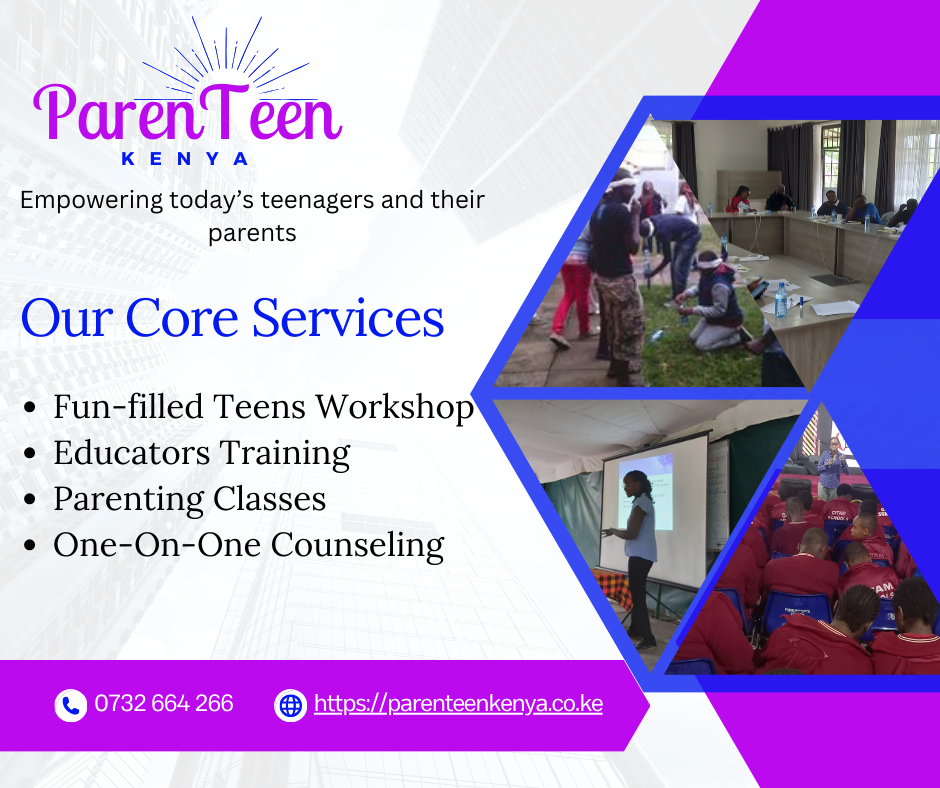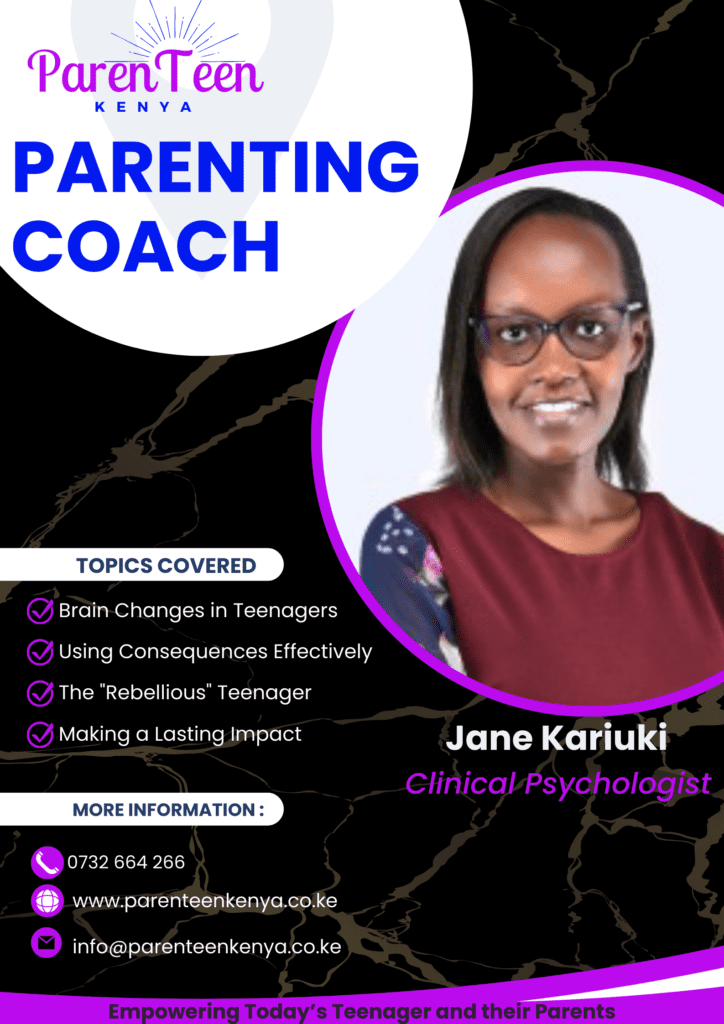Life can be pretty challenging for a teen, right?
It’s like riding a Tuk-Tuk on a rough road—many ups and downs.
You may be facing problems or setbacks that make you feel overwhelmed.
But guess what? You’re not alone.
Everyone experiences problems that cause them to feel stressed or like giving up.
Challenges are a part of life, and they can help you grow and become stronger.
Whether it’s problems with school, friends, or family, it’s normal to feel a little lost or stuck.
In this article, we will explore different ways to tackle life challenges head-on and find ways to overcome them.
So, don’t worry if things appear tough at the moment. ParenTeen Kenya will help you learn how to face problems, find solutions, and make your life better. Let’s get to it.
1- Figure Out What’s Bothering You or What You Want to Fix

When you’re feeling upset, or something just doesn’t feel right, it’s important to figure out what’s bothering you. It’s like being a cool detective trying to solve a mystery.
Take a moment to think about what’s making you feel this way. Is it a disagreement you have with a friend or family member? Or maybe it’s something happening at school?
By first understanding what’s bothering you or noticing the common teen fears you have, you can start finding a way to fix them. Questions to ask yourself include:
- What is bothering me right now?
- Why does this situation make me feel upset, angry, or sad?
- Is there something specific that triggered these emotions?
- How does this problem affect my daily life or my relationships with others?
Sometimes, it can be hard to put your feelings into words, but that’s okay. You can try talking to someone you trust, like your parents, teacher, or close friend. They might be able to help you figure out what’s going on.
Another way to figure out what’s bothering you is by writing it down in a journal or drawing a picture. Using this approach can help you express your feelings and see things more clearly.
As you figure out what’s bothering you, you may experience emotions like anger, sadness, helplessness, or confusion. If they become overwhelming, ask someone for support and also pray to God to help you through these feelings.
2- Come Up with Different Ideas to Solve the Problem

After identifying the problem, it’s time to put on your thinking cap and come up with different ideas to solve it. Think of it like being a superhero with superpowers—your ideas are your secret weapons.
Start by brainstorming. That means letting your imagination run wild and coming up with as many ideas as possible, even if they seem silly or impossible at first.
Don’t worry about judging your ideas right now—just let them flow.
You can jot down your ideas on paper, create a mind map, or make a list on your phone or computer. Whatever works best for you.
Next, take a closer look at your ideas. Are there any that stand out or seem more realistic?
You might want to talk to someone you trust, like your parents, close friends, or relatives, and see if they have any suggestions.
Let’s look at examples in the table below.
| Sample Problem | Solution Ideas |
| Feeling stressed about upcoming exams | – Plan a study schedule
– Revise with a friend – Ask mum/dad to help you revise – Postpone doing it – Ask a teacher to give you tips |
| Conflict with mum/dad about a party | – Approach them again this time calmly
– Find another way to convince your parents – Involve a mediator – Try and understand their viewpoint – Accept their decision |
| Seeing yourself as ugly | -Ask the view of someone you care
– Write down reasons that make you feel ugly and see if they are realistic – Process your feelings with a close friend, counselor, or parent – Change the friends that put you down – Reduce time on social media and stop seeing photos of people looking flawless |
Once you have a few ideas that you think could work, it’s time to choose the best one.
3- Pick the Most Realistic Solution
After you note down the possible solutions, it’s time to put on your decision-making hat and pick the solution that you think will work best for you.
It’s like choosing the right tool to fix a broken Xbox or selecting the perfect cake recipe.
First, take a moment to consider each solution and imagine how it would work in your specific situation. Ask yourself:
- Does it feel like a good fit?
- Can I realistically implement this solution?
- Am I willing and committed to putting in the effort required for this solution?
- Will it help me solve the problem?
Sometimes, it can be helpful to make a list of the advantages and disadvantages of each solution. This step will help you have a clearer picture of which solution might be the best fit.
Don’t be afraid to ask for advice from someone you trust, like your parent, teacher, or friend. They can offer their perspective and help you make a decision.
Remember, you’re not alone in the solution-finding journey; these people care about you.
Once you’ve made your decision, put your chosen solution into practice. If your first solution doesn’t work out, don’t worry. You can always try another one.
Keep experimenting, keep learning, and keep trying until you find the solution that works best for you. That’s how you become a problem-solving pro😉.
4- Create a Step-By-Step Guide and Take Action

After picking the best solution, it’s time to create a plan or a step-by-step guide. Think of it like making a map to reach your destination or following the instructions on a new card game.
First, think about the solution you picked and break it down into smaller tasks that you can tackle one by one.
For each step, think about what you need to do and in what order. It’s like putting puzzle pieces in their proper places. Write down your plan on paper or create a checklist on your computer.
Make sure your overall plan is realistic and achievable
Think about the resources you have and the time you need for each step. This consideration will help you stay organized and focused. Here is an illustration.
Kate had a long-standing problem with understanding and completing her math homework. She decided to face this problem head-on and came up with the following step-by-step process:
- Review the lesson before starting the homework
- Solve each math question and refer to notes when need be
- Ask her older brother to help with the hard questions
- Take a short break after tackling the hard questions
- Finish the rest of the homework
- Practice the difficult questions again with other similar questions for an extra 15–30 mins
After doing this for five weeks, Kate noticed that her math homework was slowly becoming manageable compared to the previous time.
Remember, it’s okay if your plan changes along the way. Sometimes, we need to adjust our steps based on new information or unexpected challenges.
If you’re feeling overwhelmed, ask for help from a parent, teacher, or a trusted adult. They can guide you in creating a plan and offer support along the way.
5. Evaluate the Results, Improve on It, or Stay on Course

Once you’ve taken action and tried to solve a problem, it’s important to evaluate the results.
This means looking at what happened and figuring out if your solution worked or if there’s room for improvement.
It’s like being a detective and examining the clues to see if you solved the mystery or if there’s more to discover.
Take a moment to reflect on what happened after you implemented your solution. Did it work? Did it partially work? Or did it not work at all?
Be honest with yourself, and don’t be discouraged if things didn’t go as planned. Sometimes, it takes a few tries to find the best solution.
If your solution worked well and solved the problem, congratulations. You can celebrate your success and feel proud of yourself.
If your solution didn’t work or only partially worked, don’t worry. This is an opportunity to learn and improve.
Consider what could have gone better or what you could do differently next time.
However, if your solution works well and continues to solve the problem, then keep going.
Always remember that problem-solving is a journey, and it’s okay to make mistakes along the way.
ParenTeen Kenya Can Help
ParenTeen Kenya is here to help if taking these steps on your own seems overwhelming, or you want to achieve more. We will go through the process together and help you with follow-up to ensure you solve the problem.
Book a session with us, and our counselor will guide you through this and other problem-solving skills.
Images by Unsplash, Giphy, and Pexel
Jane Kariuki is a devout Christian, Clinician, Psychologist, and founder of ParenTeen Kenya. She authored an exceptional training manual used in her teens’ workshop and an instructional guidebook for her parenting classes. If she is not training, blogging, or counseling, Jane loves to spend time with her sweet husband and three children.








[…] Learn more: How Do I Solve My Problems as a Teenager? […]
[…] Learn more about how to solve your problems as a teenager here: How Do I Solve My Problems as a Teenager? […]